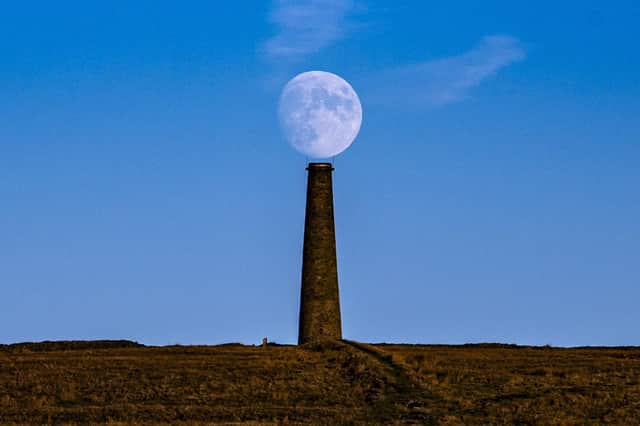Picture Post: Remnant of a bygone age of lead mining on Grassington Moor


The moon rises above chimney on Grassington Moor as a monument among the remnants of the lead mines that scar the area. The cupola lead smelt mill built was by the Duke of Devonshire to serve the lead mines on Grassington Moor in 1792.
Prior to that the monks of Fountains Abbey started lead mining on Grassington Moor over 500 years ago.
Advertisement
Hide AdAdvertisement
Hide AdMore recently, in the 18th century the Duke of Devonshire took on a more active role. As a result the mine workings grew substantially. However by the late 19th century production had all but ceased and the mine was closed.
At the height of production the smelt mill contained two coal-fired reverberatory (‘cupola’) furnaces, a roasting furnace and a slag hearth. Late in 1825 or early 1826, a third furnace was added. No.1 furnace was shut down at the end of August 1830. The remaining pair were still called No.2 and No.3, however, until at least 1855.
The mill is associated with an elaborate flue – nearly 1,600 metres long – with two condensers in its course, terminating in an 18 metres high chimney. The chimney was saved by the Earby Mines Research Group which undertook major repairs to it in 1966 and 1971.
The extended flue was built in the 1850s in order to collect lead from the waste gases called ‘fume’ drawn off the furnaces. The lead condensed out on the sides of the flue and on brushwood loaded into the two condensers along its course.
Advertisement
Hide AdAdvertisement
Hide AdThe flue was regularly scraped and washed out and the contents led into settling ponds lying just above the smelt mill.
The slag mill appears to have been the former Moor Mill which took advantage of the latter’s waterwheel for driving its blowing mechanism. The mill had a normal slaghearth until 1858 when Yorkshire’s only known example of a Castillian, or Spanish, slag-hearth was built. The history of the mill’s last 20 years or so are a blank because the ledgers from 1856 to May 1882, when the cupola closed, are missing.
Technical details, Nikon D6 camera, 70-200mm lens with an exposure of 1/1250th of a second at f 7.1, ISO 100.